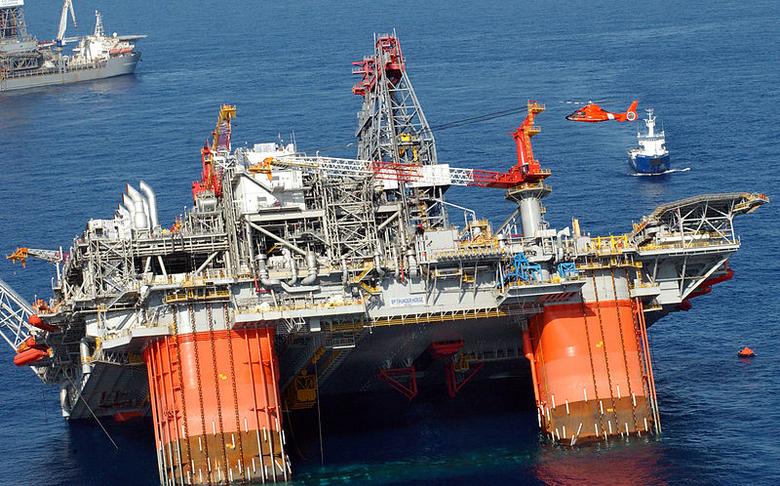
OIL PRICES DECLINED

Market balances are reflected in changing futures price spreads
As supply and demand balances loosened in the second half of 2014, global inventories increased and crude oil prices for near-term delivery declined substantially more than prices for delivery further into the future. In January 2015, the price discount of near-term deliveries to longer-dated deliveries grew to the highest level since 2009 for North Sea Brent futures and since 2011 for West Texas Intermediate (WTI) futures. As of January 27, the difference between the front month contract and the sixth month contract was $7.33 per barrel lower for Brent and $8.67 per barrel lower for WTI than at the start of July before the steep decline in oil prices (Figure 1). The futures curves moved from backwardation (when prices for near-term deliveries are higher than prices for longer-dated deliveries) in early July to contango (when prices for near-term deliveries are lower than prices for longer-dated deliveries) over this period.
The higher price for longer-dated contracts in a contango market provides an incentive to store crude oil for future delivery. As low-cost storage capacity fills, more-expensive storage options are needed, such as floating storage (keeping crude in tankers outside of coastal refining centers). Increases in the cost of storage put downward pressure on near-term prices.
At the same time, growing inventories and a looser market balance reduce the price effect of potential future supply disruptions, lowering risk premiums in crude oil markets. In late 2013 and early 2014, crude oil futures curves were very backwardated as markets faced persistent unplanned supply outages. Uncertainty in future supply meant that market participants were willing to pay a premium to hold physical crude oil, pushing up near-term prices. The currently steep contango signifies the opposite—that markets are amply supplied.
Petroleum inventory data for countries in the Organization for Economic Cooperation and Development (OECD) show the relationship between rising inventories and steepening contango (Figure 2). OECD inventory figures for August 2014, the latest available, show commercial petroleum inventories rose by 34 million barrels year-over-year. The average 1st to 6th month spread for Brent prices in August was -$1.74 per barrel, a year-over-year decline of $5.91 per barrel in the spread. As noted above, 1st to 6th month spreads have continued their steep decline over the past six months. The latest Short-Term Energy Outlook (STEO) forecasts OECD inventories to end January 2015 161 million barrels over last year, similar to the build experienced during the first quarter of 2009, when inventory builds reflected lower demand driven by a major decline in global economic activity.
A similar relationship holds for futures price spreads and changes in United States inventories, including inventories in Cushing, Oklahoma, where the WTI futures contract is delivered. The year-over-year changes in WTI 1st to 6th month price spreads are not as steep as those in the Brent market, but still reached the steepest drop for WTI since 2009. Using EIA's Weekly Petroleum Status Report, total United States commercial crude oil inventories stood at 407 million barrels as of January 23, 61 million barrels higher than the 2010-14 average and 49 million barrels higher than this time last year. Recent inventory changes reflect builds in Cushing, Oklahoma, averaging 1.5 million barrels per week since November. Cushing storage as of January 23 is more than double the end-of-July level.
Future movement towards a flatter price spread (1st to 6th month spread increasing closer to $0 per barrel) would indicate that market balances are beginning to narrow. The STEO forecasts market balances to tighten in the last quarter of 2015.
U.S. gasoline price mostly lower, diesel fuel prices continue decline
The U.S. average retail price for regular gasoline fell to $2.04 per gallon as of January 26, 2015, down two cents from the previous week and $1.25 per gallon lower than the same time last year. Midwest and Gulf Coast prices ended 16 consecutive weeks of price declines, rising two cents and one cent, respectively, to $1.94 per gallon and $1.85 per gallon. East Coast and West Coast prices declined five cents, to $2.10 per gallon and $2.33 per gallon, respectively. The Rocky Mountain price fell four cents to $1.87 per gallon.
The U.S. average price for diesel fuel was down seven cents from the week prior to $2.87 per gallon, $1.04 per gallon less than the same time last year. The Midwest price decreased nine cents to $2.80 per gallon. The Rocky Mountain and West Coast prices fell seven cents, to $2.81 per gallon and $2.94 per gallon, respectively. The Gulf Coast price was down six cents to $2.79 per gallon, and the East Coast price decreased five cents to $2.97 per gallon.
Propane inventories fall
U.S. propane stocks decreased by 1.9 million barrels last week to 69.3 million barrels as of January 23, 2015, 37.6 million barrels (118.8%) higher than a year ago. Midwest inventories decreased by 1.2 million barrels and Gulf Coast inventories decreased by 0.6 million barrels. Rocky Mountain/West Coast inventories decreased by 0.2 million barrels while East Coast inventories increased by 0.1 million barrels. Propylene non-fuel-use inventories represented 6.1% of total propane inventories.
Residential heating fuel prices decrease
As of January 26, 2015, residential heating oil prices averaged less than $2.82 per gallon, almost 2 cents per gallon lower than last week, and nearly $1.36 per gallon less than last year's price for the same week. Wholesale heating oil prices were virtually unchanged at $1.76 per gallon, $1.63 per gallon lower when compared to the same time last year.
Residential propane prices averaged less than $2.38 per gallon, 1 cent per gallon lower than last week, and nearly $1.64 per gallon less than the price at the same time last year. The average wholesale propane price increased by 1 cent per gallon this week to 63 cents per gallon, almost $2.92 per gallon lower than the January 27, 2014 price.
eia.gov






